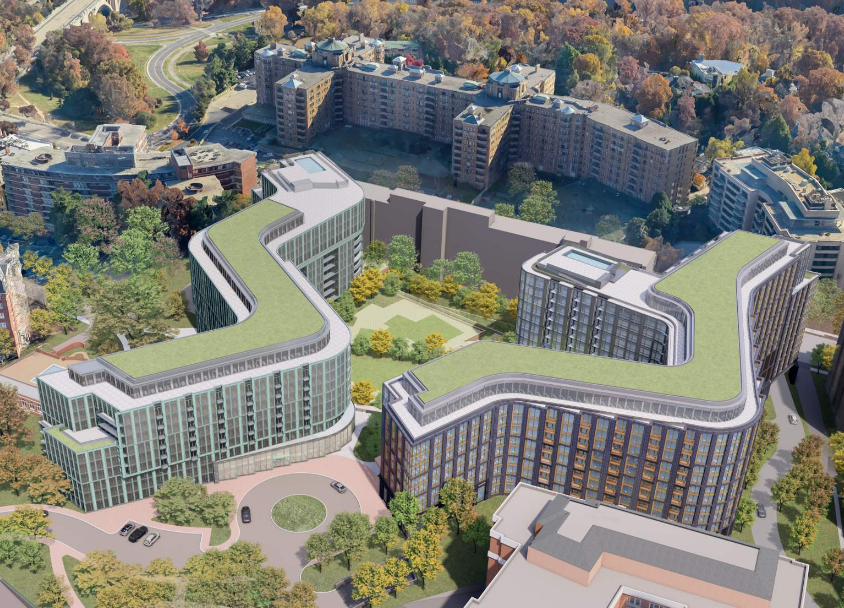Wardman Park
Environmental Case Study
When Carmel embarked on the Wardman Park project, we sought to minimize waste, improve efficiency and promote sustainability. Wardman Park, located in Washington, D.C., is a planned 887-unit project that sits on 12 acres of land with ample outdoor amenities, including immediate access to Rock Creek Park, a 1,754-acre city park featuring a golf course, equestrian trails, sport venues and picnic and playground areas.

We are seeking LEED Gold certification for this development and have set up construction practices to minimize waste. The existing site contains a large-scale convention center and a hotel which is being demolished, generating an estimated 111,250 tons of total demolition debris. Importantly, we estimate approximately 60,000 tons of concrete material, 4,500 tons of brick or block and 750 tons of metal material will be entirely recycled. Additionally, we estimate 40,000 tons of concrete will be demolished and processed into 12-inch materials for re-use on site. By weight, the resulting diversion percentages for recycling are projected to be roughly 95% of the total weight of the waste materials generated.
To help secure Regional Priority LEED credits, all of the construction materials will be procured within the required 500-mile radius of the development site. Once constructed, we will use a variable refrigerant flow system to heat and cool the building. This electric system is among the most environmentally friendly ways to condition buildings and it includes heat recovery to ensure efficient building performance.
Note: While Carmel Partners believes ESG+R factors can enhance long-term value, Carmel Partners does not pursue an ESG-based investment strategy or limit its investments to those that meet specific ESG criteria or standards. Any such considerations do not qualify Carmel Partner’s objectives to maximize risk-adjusted returns.